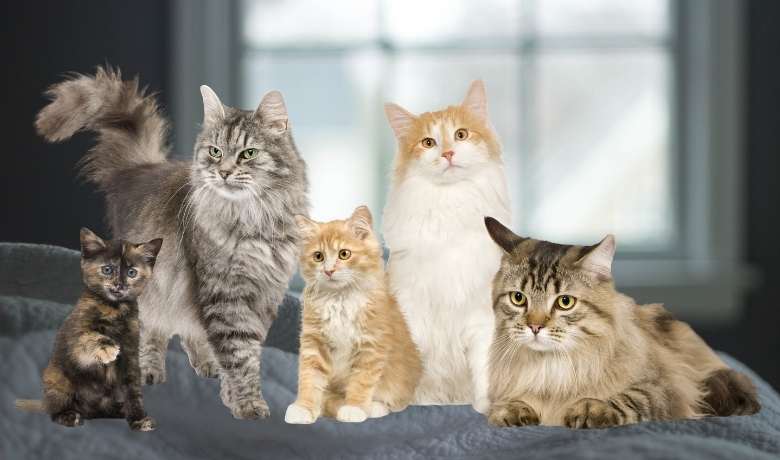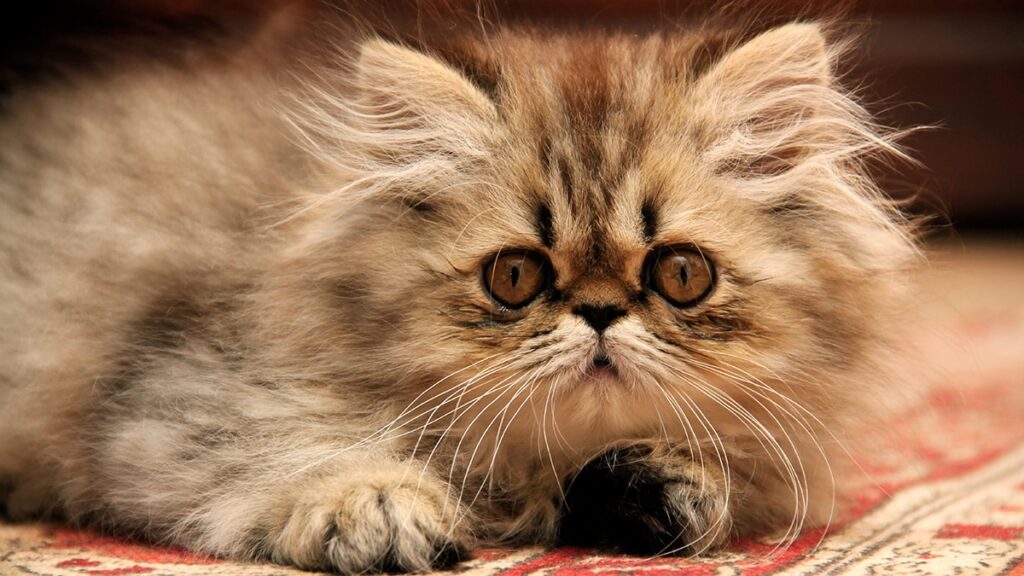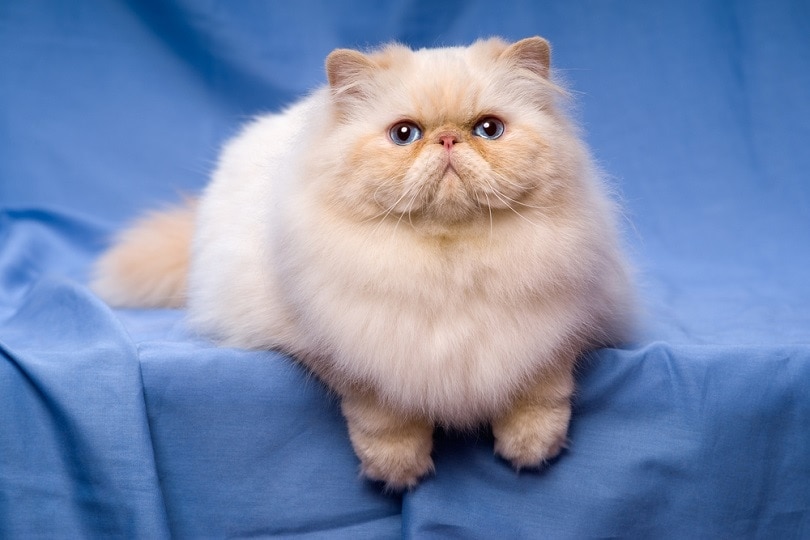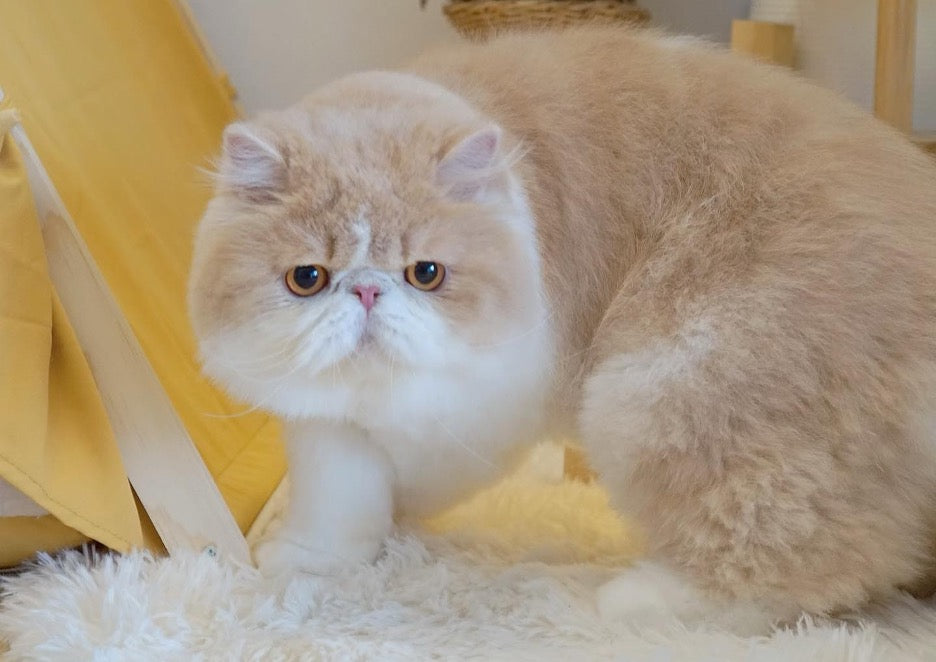Have you ever wondered about the different colors and patterns of Persian cats? Well, let me tell you, they are absolutely fascinating! Persian cats are known for their luxurious, long coats and beautiful features, but what sets them apart are the various colors and patterns that they come in.
From solid colors like white, black, cream, and blue, to tabby patterns with stripes and swirls, Persian cats offer a wide range of options for cat lovers. They can also come in bi-color or tortoiseshell patterns, creating a unique and eye-catching look. Each color and pattern has its own charm and appeal, making Persian cats even more interesting to learn about.
In my upcoming article on my blog “http://persiancatdude.com”, I’ll be delving deeper into the different colors and patterns of Persian cats. You’ll learn about the genetics behind these variations, as well as the common traits associated with each color and pattern. So, if you’re a fan of Persian cats or simply curious about the world of feline diversity, stay tuned for an exciting read that will surely capture your interest!
The Different Colors and Patterns of Persian Cats

Physical Characteristics of Persian Cats
Persian cats are known for their luxurious, long, and dense coats, which are one of their most distinguishing features. However, Persian cats come in a variety of different coat colors and patterns, as well as eye colors and head shapes. Understanding these physical characteristics is important for enthusiasts and potential owners of Persian cats.
Coat Colors of Persian Cats
Persian cats can have a wide range of coat colors, each with its own unique beauty. Here are some of the most common coat colors seen in Persian cats:
Solid Colors
Solid-colored Persian cats have coats that are uniform in color throughout their bodies. Some popular solid colors include white, black, blue, red, cream, chocolate, lilac, and silver.
Tabby Colors
Tabby Persian cats have coats with distinct striping patterns. These patterns can vary in intensity and can be seen in colors such as brown, blue, silver, cream, and red.
Parti-Color or Tortoiseshell Colors
Parti-color Persian cats have coats with patches of different colors. Tortoiseshell coats, also known as “torties,” consist of a combination of black, red, and cream patches.
Smoke or Shaded Colors
Smoke Persian cats have coats that are primarily one color, but with a white undercoat that creates a smoky appearance. Shaded Persian cats have coats that are one color, but with darker shading on the back and tail.

Coat Patterns of Persian Cats
In addition to the different coat colors, Persian cats also come in various patterns. These patterns are determined by the distribution of colors on their coats. Some popular coat patterns seen in Persian cats include:
Bicolor Pattern
Bicolor Persian cats have large areas of white fur combined with another color. The color can be seen on the head, ears, tail, and sometimes on the body.
Calico Pattern
Calico Persian cats, also known as tricolor cats, have coats with patches of white, black, and orange. The distribution of these patches can vary from cat to cat.
Van Pattern
Van pattern Persian cats have a solid-colored head and a few patches of color on the body. These patches are typically located on the tail and hind legs.
Tortoiseshell Pattern
As mentioned earlier, tortoiseshell Persian cats have coats with patches of black, red, and cream. The distribution of these patches can vary, creating unique and beautiful patterns.
Eye Colors of Persian Cats
The eye color of a Persian cat can be just as captivating as its coat color. Persian cats can have a variety of eye colors, with some of the most common being:
Copper or Amber Eyes
Copper or amber eyes are commonly seen in Persian cats with red, cream, and solid white coats. These eye colors add a warm and gentle look to the cat.
Blue Eyes
Blue eyes are not as common in Persian cats, but they can be seen in cats with pointed patterns, such as the Himalayan Persian. Blue eyes provide a striking contrast to the cat’s coat color.
Odd-Eyed Persian Cats
Odd-eyed Persian cats have one eye that is copper or amber and the other eye that is blue. This unique eye color combination creates a captivating and mesmerizing look.

Head Shape of Persian Cats
The head shape of a Persian cat is another distinguishing physical characteristic. Persian cats have a round and broad head, which is a result of selective breeding over time. This head shape is often referred to as “doll-like” or “peke-faced.”
Overview of Persian Cat’s Head Shape
The round head shape of a Persian cat is one of its most iconic features. It gives the cat a charming and sweet expression that many people find irresistible.
Brachycephalic Features of Persian Cats
The round head shape of Persian cats also comes with brachycephalic features. This means that their face is relatively flat and shortened. Persian cats have a short nose and a slightly pushed-in appearance.
The Role of Facial Structure on Health and Well-being
It’s important to note that the brachycephalic features of Persian cats can sometimes lead to health issues. Their shortened nose can cause breathing difficulties, and their facial structure can make them more prone to eye problems. Regular check-ups with a veterinarian are essential to ensure the overall health and well-being of Persian cats.
Grooming and Care for Persian Cats
Persian cats have long and dense coats, which require regular grooming and care to keep them looking their best. Here are some essential grooming tasks for Persian cat owners:
Regular Brushing and Combing
Persian cats need to be brushed and combed daily to prevent their coats from matting and tangling. Use a stainless steel comb and a slicker brush to gently remove any knots or tangles. Regular brushing also helps to reduce shedding.
Bathing Persian Cats
Persian cats should be bathed regularly to keep their coats clean and healthy. Use a cat-specific shampoo and gently massage it into the cat’s fur. Rinse thoroughly and dry the cat with a towel or a low-heat blow dryer.
Eye Cleaning and Tear Stain Removal
Because of their facial structure, Persian cats may be prone to tear staining. Clean their eyes daily with a soft cloth or a pet-safe eye wipe to remove any dirt or discharge. To remove tear stains, you can use a tear stain remover specifically made for cats.
Dental Care for Persian Cats
Dental care is important for the overall health of Persian cats. Brush their teeth regularly using a cat-friendly toothbrush and toothpaste. Additionally, provide them with dental treats or toys to help keep their teeth clean.

Proper Nutrition for Persian Cats
Ensuring that your Persian cat receives a balanced and nutritious diet is crucial for their health and well-being. Here are some important considerations when it comes to their nutrition:
Choosing a High-Quality Cat Food
Select a high-quality cat food that is specifically formulated for Persian cats. Look for a food that contains high-quality protein sources, such as chicken or fish, and does not contain any artificial additives or fillers.
Special Dietary Needs for Persian Cats
Persian cats may have specific dietary needs, especially when it comes to their coat health. Look for cat foods that are enriched with omega-3 fatty acids and other essential nutrients to promote a healthy and shiny coat.
Feeding Schedule for Persian Cats
Establish a regular feeding schedule for your Persian cat to help maintain their weight and prevent overeating. It’s a good idea to divide their daily food portion into several small meals throughout the day.
Personality Traits of Persian Cats
Persian cats are known for their calm and gentle nature, making them wonderful companions. Understanding their personality traits can help potential owners determine if a Persian cat is the right fit for them:
Calm and Gentle Nature
Persian cats are generally relaxed and laid-back. They are not usually hyperactive or overly demanding, which makes them ideal pets for individuals or families looking for a calm and peaceful companion.
Independent Yet Affectionate
Persian cats have an independent nature and enjoy spending time alone. However, they are also very affectionate and enjoy being around their owners. They will often seek out attention and love to be petted and cuddled.
Adaptability and Social Behavior
Persian cats are known for their adaptability to different environments and lifestyles. They can thrive in apartments or houses and are generally sociable with both humans and other pets.
Playfulness and Intelligence
While Persian cats may not be as active as some other cat breeds, they still enjoy playtime and interactive toys. They are intelligent cats and can easily learn new tricks or games to keep themselves mentally stimulated.

Health Issues Common in Persian Cats
Like any other breed, Persian cats may be predisposed to certain health issues. It’s important to be aware of these conditions and take necessary precautions:
Breathing Difficulties
The brachycephalic features of Persian cats can sometimes lead to breathing difficulties, especially during hot weather or vigorous exercise. It’s important to provide them with a cool and well-ventilated environment.
Eye Problems
Persian cats may be more prone to eye problems due to their facial structure and excessive tearing. Regular eye cleaning and veterinary check-ups can help prevent and treat any eye-related issues.
Polycystic Kidney Disease (PKD)
Polycystic Kidney Disease is a hereditary condition that can affect Persian cats. Regular screening by a veterinarian can help identify the condition early, allowing for proper management and treatment.
Teeth and Gum Diseases
Due to their shortened nose and facial structure, Persian cats may be more susceptible to dental issues. Regular dental care, including brushing and professional cleaning, can help maintain their oral health.
Exercise and Entertainment for Persian Cats
Although Persian cats may not be as energetic as some other breeds, they still require regular exercise and mental stimulation. Here are some ways to keep them entertained:
Indoor Playtime Activities
Create a cat-friendly environment with plenty of toys and scratching posts. Engage your Persian cat in daily play sessions, such as interactive wand toys or puzzle toys, to keep them physically active.
Interactive Toys for Mental Stimulation
Persian cats are intelligent and benefit from toys that provide mental stimulation. Puzzle toys or treat-dispensing toys can encourage them to use their problem-solving skills and keep their minds sharp.
Creating a Cat-Friendly Environment
Ensure that your home is a safe and cat-friendly environment for your Persian cat. Provide them with comfortable resting areas, access to windows for bird-watching, and vertical spaces like cat trees for climbing and scratching.
Persian Cats’ Socialization and Training
Proper socialization and training are important for Persian cats, especially during their early stages of life:
Early Socialization for Kittens
It’s crucial to socialize Persian kittens from a young age to help them become well-adjusted and confident cats. Expose them to various people, environments, and sounds to ensure they grow up to be sociable and friendly cats.
Positive Reinforcement Training
Persian cats respond well to positive reinforcement training methods. Use treats, praise, and play to reward good behavior and encourage them to learn simple commands or tricks.
Litter Box Training
Litter box training is essential for Persian cats to maintain proper hygiene. Provide them with a clean litter box in a quiet and easily accessible area. Show them where the litter box is located and praise them when they use it correctly.
Choosing the Right Persian Cat for You
When considering adopting or purchasing a Persian cat, there are a few factors to take into account:
Deciding on a Kitten or Adult Cat
Decide whether you want to adopt a Persian kitten or an adult cat. Kittens require more time and attention, while adult cats may already have established personalities and behavior.
Finding a Reputable Breeder
If you decide to purchase a Persian cat from a breeder, make sure to do thorough research to find a reputable and responsible breeder. Visit their facility, ask about health testing, and ensure the cats are well-cared for.
Adopting from a Rescue or Shelter
Consider adopting a Persian cat from a rescue or shelter. Many Persian cats are in need of loving homes, and adopting can be a rewarding experience. Contact local shelters or rescue organizations to inquire about available Persians.
Introducing a New Persian Cat to Your Home
When bringing a new Persian cat into your home, it’s important to take certain steps to ensure a smooth transition:
Preparing a Safe Space
Before bringing your new Persian cat home, prepare a safe and comfortable space for them. This can be a separate room with all their necessities, such as food, water, litter box, and bedding.
Gradual Introduction to Other Pets
If you have other pets, introduce them to your new Persian cat gradually and under supervision. Allow them to sniff each other through a door or use a barrier, and slowly increase their time together until they are comfortable with each other.
Establishing a Routine
Establish a consistent routine for your Persian cat, including feeding, playtime, and grooming. This will help them settle in and feel secure in their new surroundings.
Conclusion
Persian cats are not only known for their stunning appearance but also their unique colors, patterns, and physical characteristics. Understanding these traits is essential for Persian cat enthusiasts and potential owners to provide the best care and companionship. Whether you are captivated by their coat colors and patterns, mesmerized by their eye colors, or enchanted by their distinct head shape, Persian cats are sure to bring joy and beauty into your life.
10 Common Questions About Persian Cats
- Are Persian cats high-maintenance in terms of grooming?
- Yes, Persian cats require daily grooming to prevent their coats from matting and tangling. Regular brushing and monthly bathing are necessary to keep their coats clean and healthy.
- Do Persian cats have any specific dietary needs?
- While Persian cats do not have any specific dietary requirements, it’s important to feed them a high-quality cat food that is balanced and provides all the necessary nutrients. Some Persian cats may benefit from cat foods formulated for coat health.
- Are Persian cats suitable for families with young children?
- Persian cats are generally calm and gentle, making them suitable companions for families with young children. However, it’s important to always supervise interactions between the cat and children to ensure both are comfortable and safe.
- Do Persian cats tolerate being left alone for long periods?
- Persian cats are independent but also enjoy human companionship. They can tolerate being left alone for moderate periods, but it’s recommended to provide them with interactive toys and a stimulating environment to prevent boredom.
- Are Persian cats prone to any specific health issues?
- Persian cats may be predisposed to breathing difficulties due to their facial structure, as well as eye problems and dental issues. Regular veterinary check-ups and proper care can help prevent and manage these health issues.
- Do Persian cats require a lot of exercise?
- Persian cats are not as active as some other breeds, but they still require regular exercise to keep them physically and mentally stimulated. Daily playtime sessions and interactive toys are beneficial for their well-being.
- Can Persian cats be trained to use a litter box?
- Yes, Persian cats can be trained to use a litter box. It’s important to provide them with a clean litter box in a quiet and easily accessible area and reward them for using it correctly.
- Are Persian cats good with other pets?
- Persian cats are generally sociable and can get along well with other pets, including cats and dogs. However, proper introductions and a gradual approach are important to ensure they have positive relationships with other animals.
- How long do Persian cats typically live?
- Persian cats have an average lifespan of 12 to 16 years, but with proper care, they can live even longer. Regular veterinary check-ups, a balanced diet, and a safe environment are key to their longevity.
- Are Persian cats hypoallergenic?
- No, Persian cats are not considered hypoallergenic. While they do produce fewer allergenic proteins compared to some other breeds, they still produce allergens that can trigger allergic reactions in sensitive individuals.